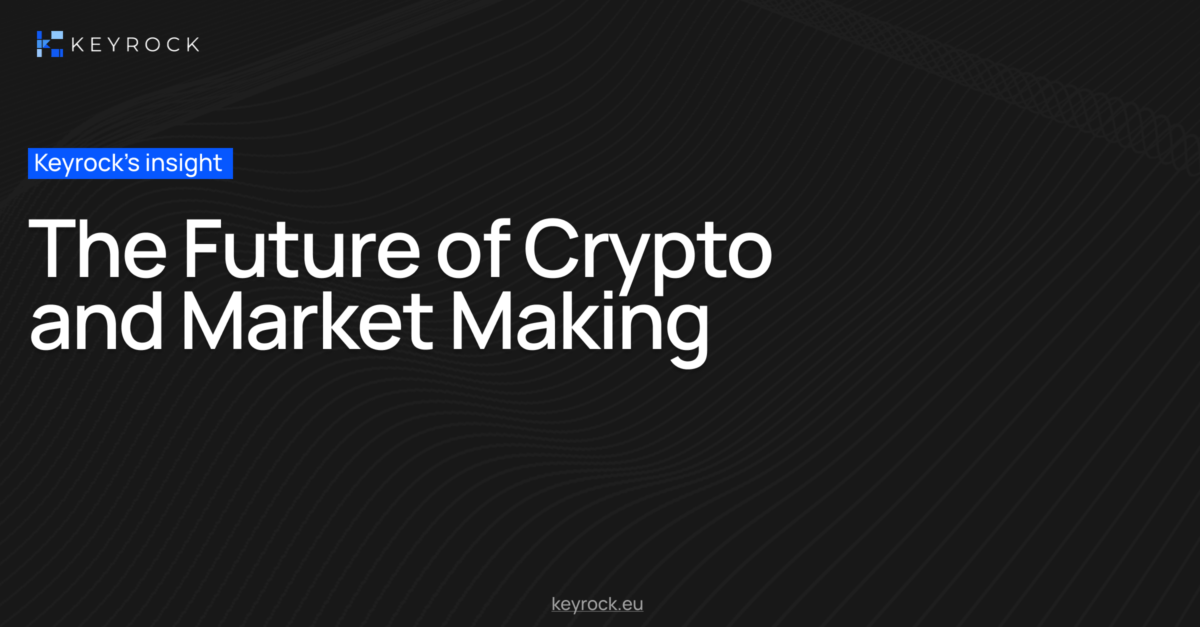One of the most exciting things about market making crypto and Web3 is what it changes — or more so upgrades — in terms of the underlying technology and infrastructure. Trading and providing liquidity with assets that are natively digital has important implications. Ultimately, it opens a new landscape for market makers and the strategies that are available to them.
Let’s take a look at how these principles and techniques can be extended into this brave new world. More so, how they are used to create new and exciting market making strategies.
Understanding programmable liquidity
Crypto market making benefits greatly from the fact that digital assets are at their core pieces of encrypted data. They are digital expressions of value that can be created, transferred over the internet, and, more importantly, programmed.
These assets can “manage themselves” according to predetermined rules and logic. Of course, this includes liquidity and forms the basis for the automated market makers (AMMs) that run on Web3 infrastructure.
We see a growing set of new tools that help crypto liquidity providers make the most out of these properties as they participate in the market making process and apply new forms of crypto risk management. Some of these are:
Concentrated liquidity: Web3 allows crypto liquidity providers to be granular about market making. This was introduced in the Uniswap v3 pool release, where crypto liquidity providers could choose which price range their capital was allocated to.
Vaults: Vaults are pools that are programmed to execute specific strategies crypto liquidity providers can participate in. They range from yield farming to option vaults to delta-neutral pools and other more sophisticated strategies. This tool was made popular by Yearn Finance and can be applied to different asset markets in crypto thanks to the composability of Web3.
Flash loans: This somewhat controversial Web3 feature (or bug) allows for the use of borrowed funds to be used for specific market opportunities as long as they’re able to be executed in a single transaction. It’s another benefit that comes from the composability of Web3.
Hooks: This new concept will be introduced in the upcoming v4 iteration of the Uniswap protocol. It lets market makers provide liquidity to pools that change fees depending on volatility, deposit unused liquidity into lending protocols, and perform other kinds of automated behaviors.
How can programmable liquidity be used in the future?
These tools allow market makers to have creative approaches to liquidity provision and crypto risk management. As a result, crypto is a fertile testing ground for what the future of market making strategies could look like. Some examples are:
Layered liquidity Provision: This involves providing liquidity at multiple price levels. Market makers place their orders at various price points, both above and below the current market price, to capture spread and volume opportunities. This strategy aims to improve the chances of order execution and can be seen as a form of crypto risk management. It is a strategy that’s commonly applied to a Uniswap v3 pool.
Yield farming: This is one of the most well-known strategies in Web3. Decentralized exchanges and lending platforms provide crypto liquidity providers additional tokens as rewards for contributing to the liquidity of a particular market. Market makers can program strategies where their funds are constantly “farming” incentives in the highest-yielding pools. This strategy is commonly applied by Vaults.
TWAP (Time-Weighted Average Price): This is a strategy where market makers execute trades gradually over a specific time period to minimize market impact. TWAP is commonly used in situations where larger trades need to be executed without causing significant price fluctuations and can also be seen as a form of crypto risk management. This is one of the strategies that will be supported by Hooks.
Wrapping up
In this series, we’ve taken a look at what market making means in crypto and traditional finance and the differences between centralized and decentralized crypto market making. Altogether, these posts should give you a better idea of what Keyrock does and its role in the crypto world.
Stay in the loop to learn more about how Keyrock tackles the challenges of market making in web3 by following on Twitter, LinkedIn, or Lens.
